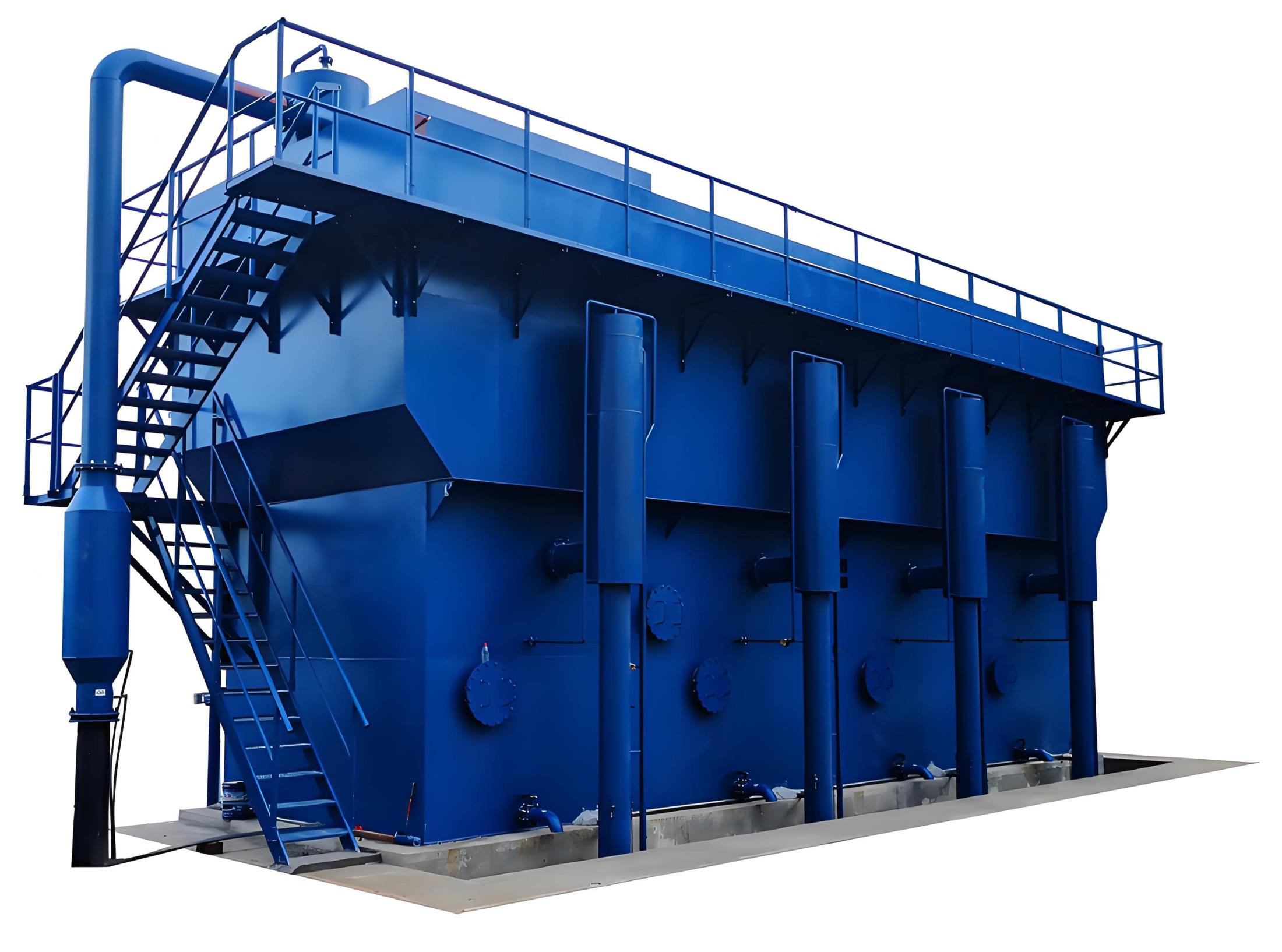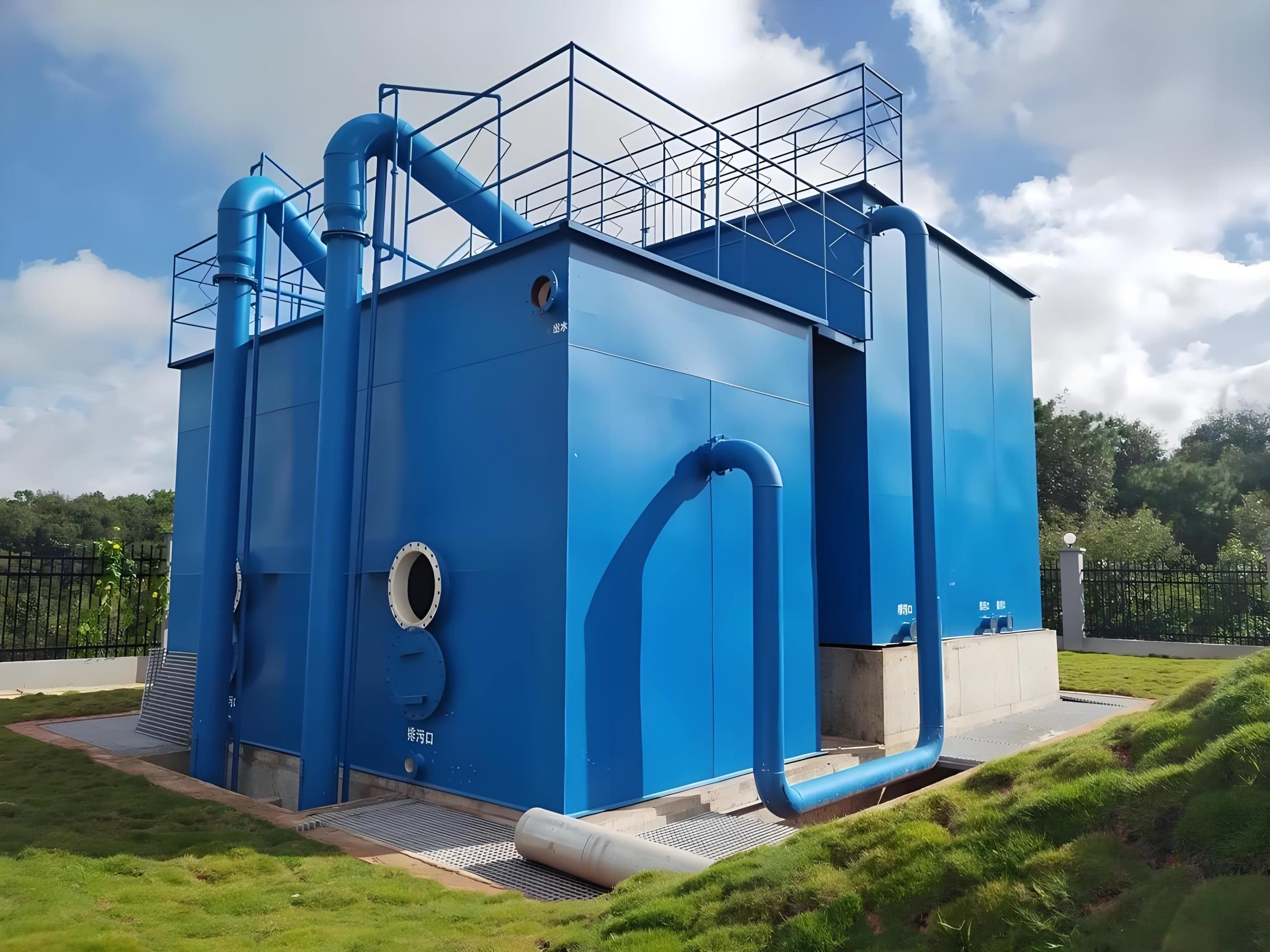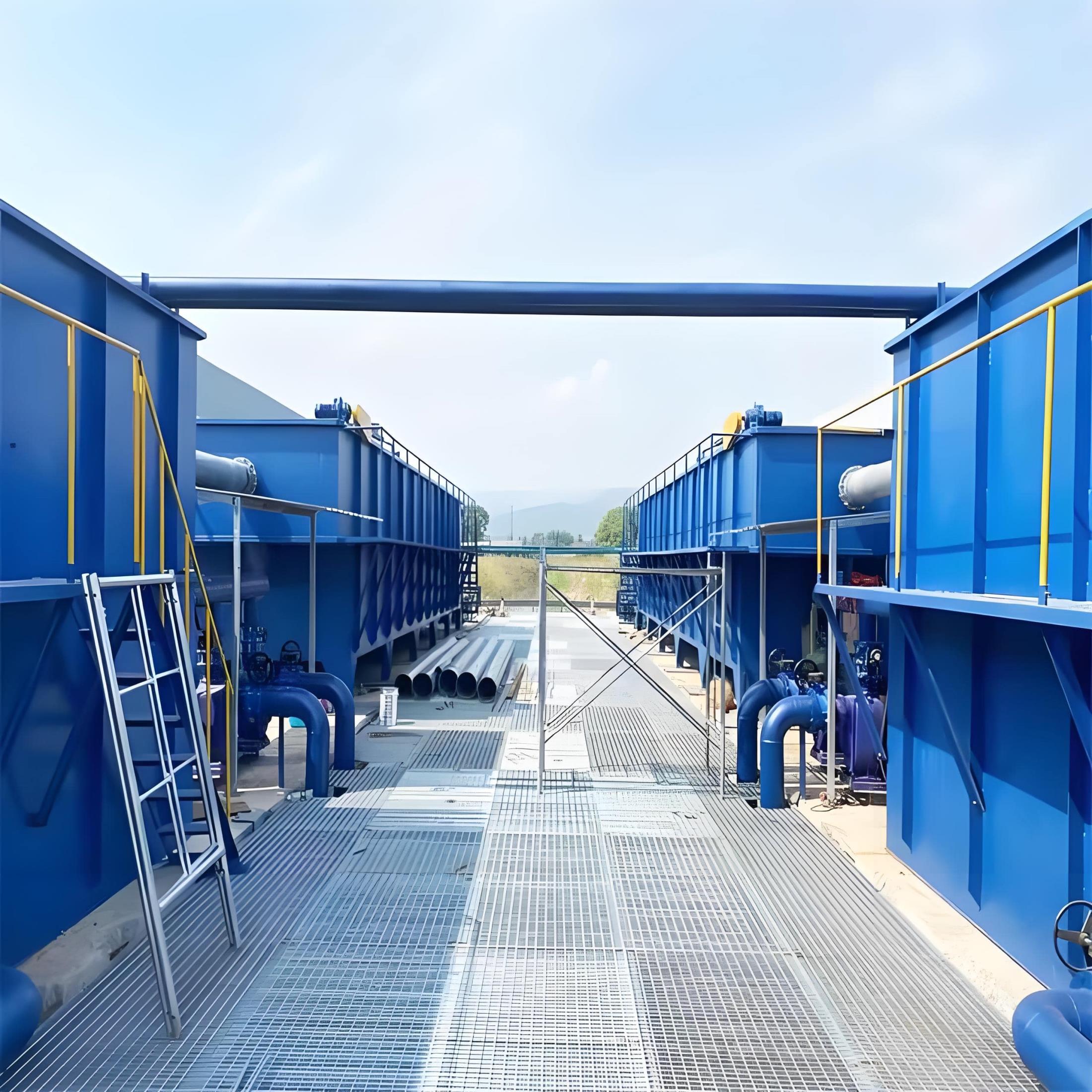The fully automatic integrated water purifier is a new type of gravity-type automatic flushing water purifier. It integrates multiple functions such as flocculation, reaction, sedimentation, wastewater discharge, backwashing, sludge concentration...
The fully automatic integrated water purifier is a new type of gravity-type automatic flushing water purifier. It integrates multiple functions such as flocculation, reaction, sedimentation, wastewater discharge, backwashing, sludge concentration, water collection, filtration, etc., and can automatically discharge sludge and automatically backwash. When the turbidity of the inlet water does not exceed 3000mg/l and the turbidity of the outlet water does not exceed 5mg/l, its treatment effect is very good and the outlet water quality is excellent. After the backwashing system, the water recovery rate of the system can reach 98%. This water purifier has low power consumption, small footprint, and can be automatically cleaned and operated without the need for special personnel management.
After the raw water and coagulant are mixed, they will enter the integrated water purifier. Under the action of swirl and turbulence, the coagulant and raw water condense in the reaction and coagulation zone to form a large alum flower, and then enter the inclined plate sedimentation zone. This sedimentation zone can be divided into two sub-zones, namely the upper inclined plate sub-zone and the lower inclined plate sub-zone. The apertures of the inclined plates in the two sub-zones are different, which is conducive to solid-liquid separation. The flocculent suspended matter will be collected in the upper inclined plate sub-area, which plays the role of balancing water flow and diversion. The flocs flow down along the inclined plate and enter the sedimentation area. The sludge generated in the sedimentation area enters the sludge collection area under the action of hydraulic propulsion and natural sedimentation. The sludge collection area is equipped with an electric sludge discharge system and an auxiliary sludge discharge device to facilitate the complete discharge of sludge.
The water after sedimentation treatment will enter the filtration area and pass through the filter material layer from top to bottom. The filtered water passes through the connecting pipe in the filter tank and enters the clear water area at the top of the filter tank, and then flows to the next purification tank. Each filter tank is equipped with a siphon backwashing device. When the filtration resistance increases, backwashing can be performed automatically.
Raw water turbidity: no more than 3000mg/l
Applicable raw water temperature: room temperature
Outlet turbidity: no more than 3 - 5mg/l
Design surface load of sedimentation area: 7 - 8m³/m².h
Design filtration rate of filtration area: 8 - 10m³/h
Filter tank flushing intensity: 14 - 16L/m².s
Flushing duration: 4 - 6 minutes (adjustable)
Total residence time: 40 - 45 minutes
Water inlet pressure: 0.06MPa
This water purifier integrates a series of processes such as reaction, flocculation, sedimentation, mud collection, water distribution, filtration, backwashing, and mud discharge to meet the requirements of automatic operation without the need for special personnel management.
The high concentration of flocculation layer can fully mix the impurity particles and coagulant in the raw water, achieve a good flocculation effect, adapt to various water turbidity, and have a high removal rate of impurity particles.
The sludge concentration in the sludge collection tank is high, and the automatic sludge discharge system is adopted to ensure the timely discharge of sludge, thereby ensuring an effective sludge removal rate.
The water purifier adopts an efficient flocculation sedimentation process and is also equipped with automatic filtration and backwashing devices, so the effluent water quality is excellent.
This water purifier has low water consumption and can effectively save water.
It occupies a small area and is easy to install.
The fully automatic integrated water purifier is an integrated water purification device, which should be installed on a designed concrete structure and connected to the water inlet and outlet pipes.
This device uses a 380V three-phase power supply for automatic control.
The thickness of the filter material needs to be checked once a year for timely replenishment.



Copyright 2025 All Right Reserved. Hebei Fupeng Environmental Protection Technology Group Co., LTD